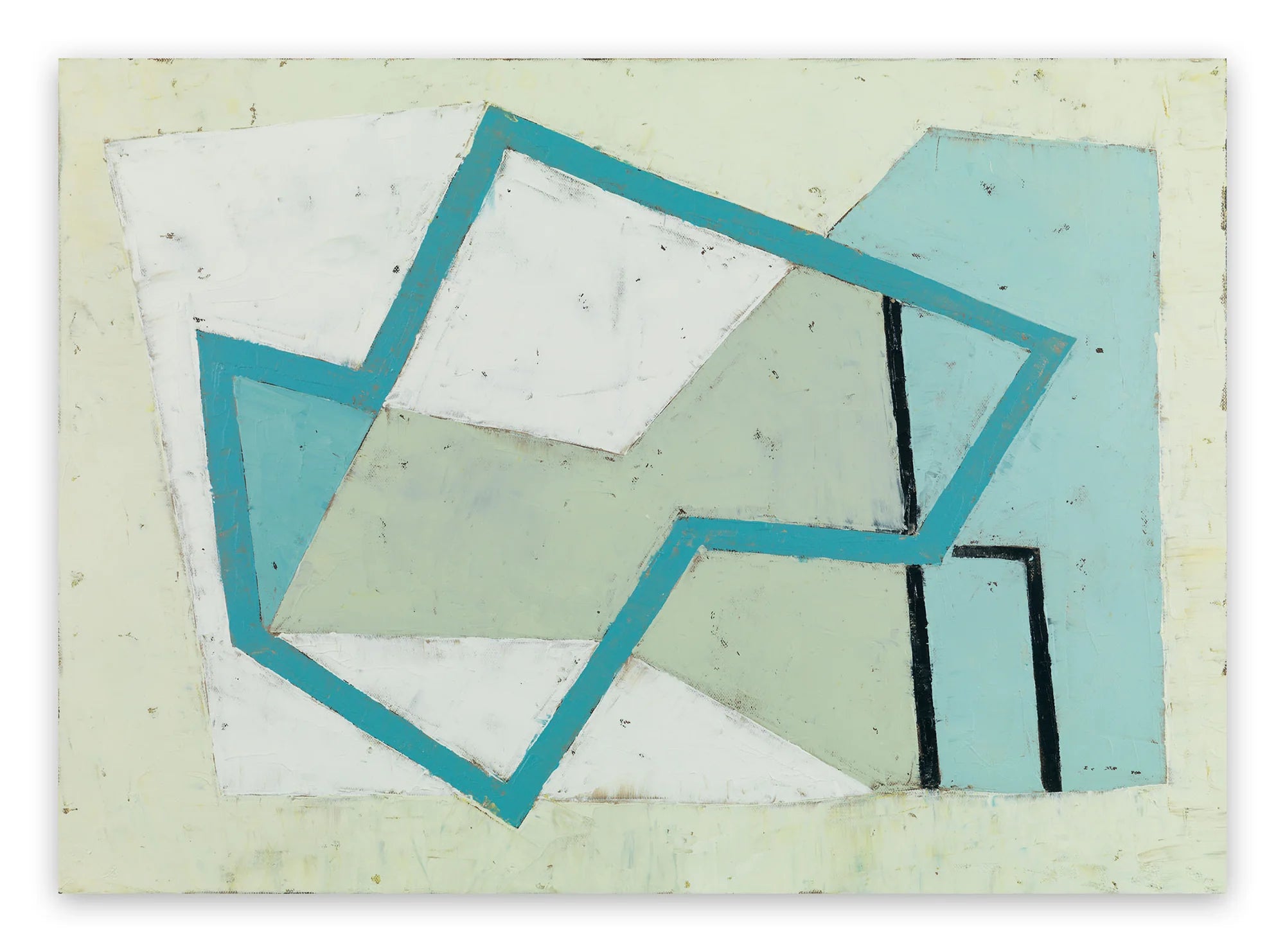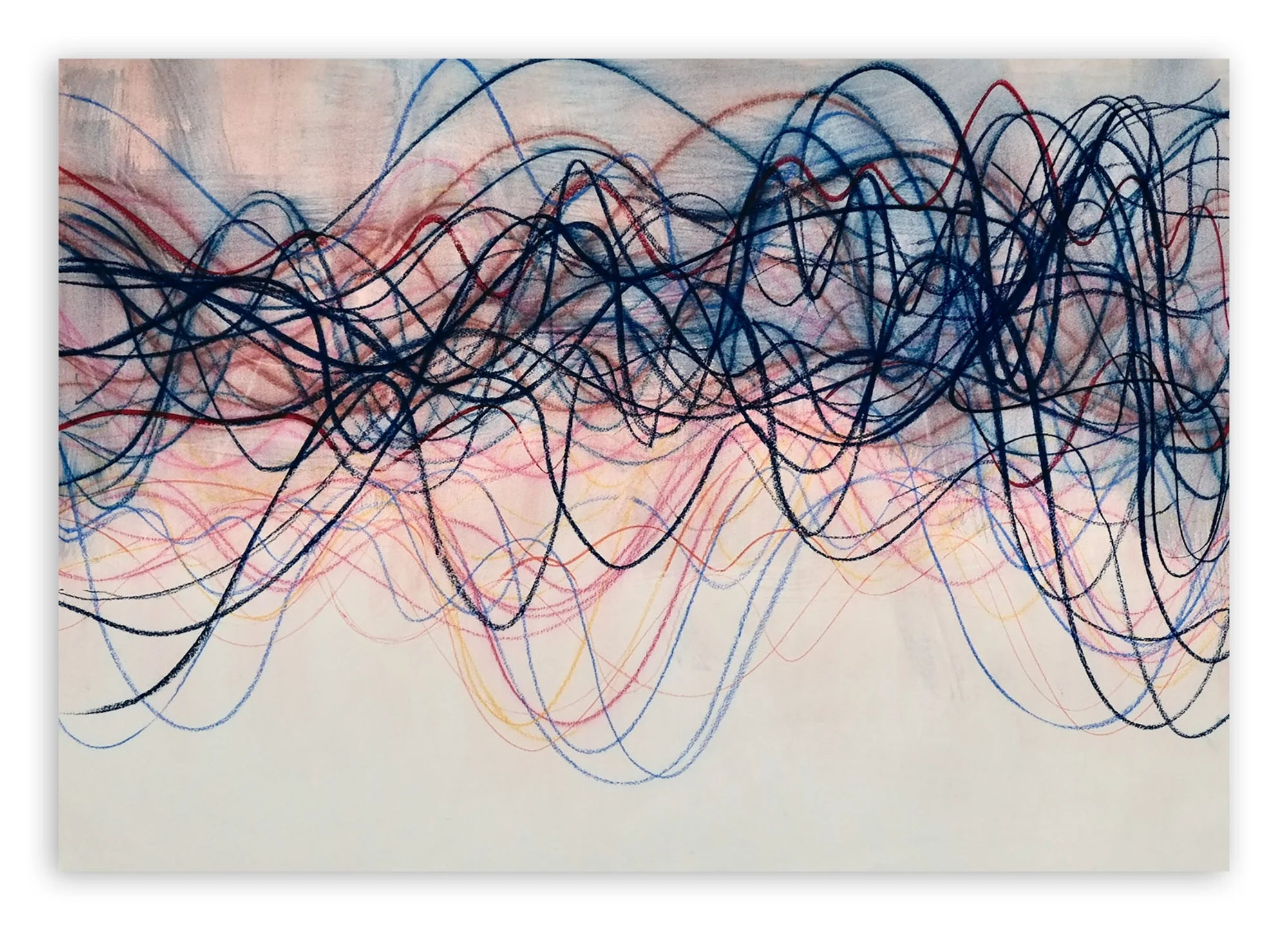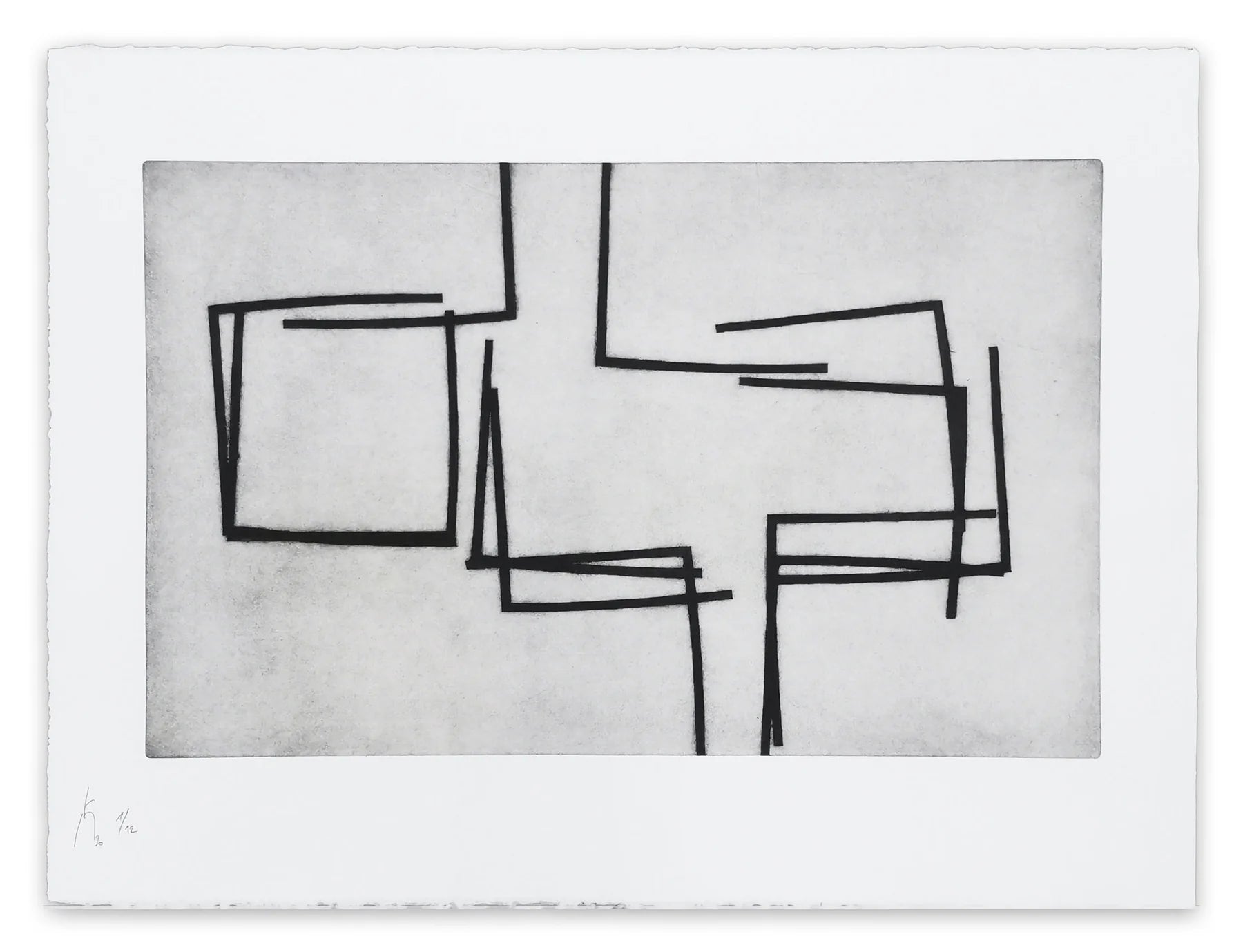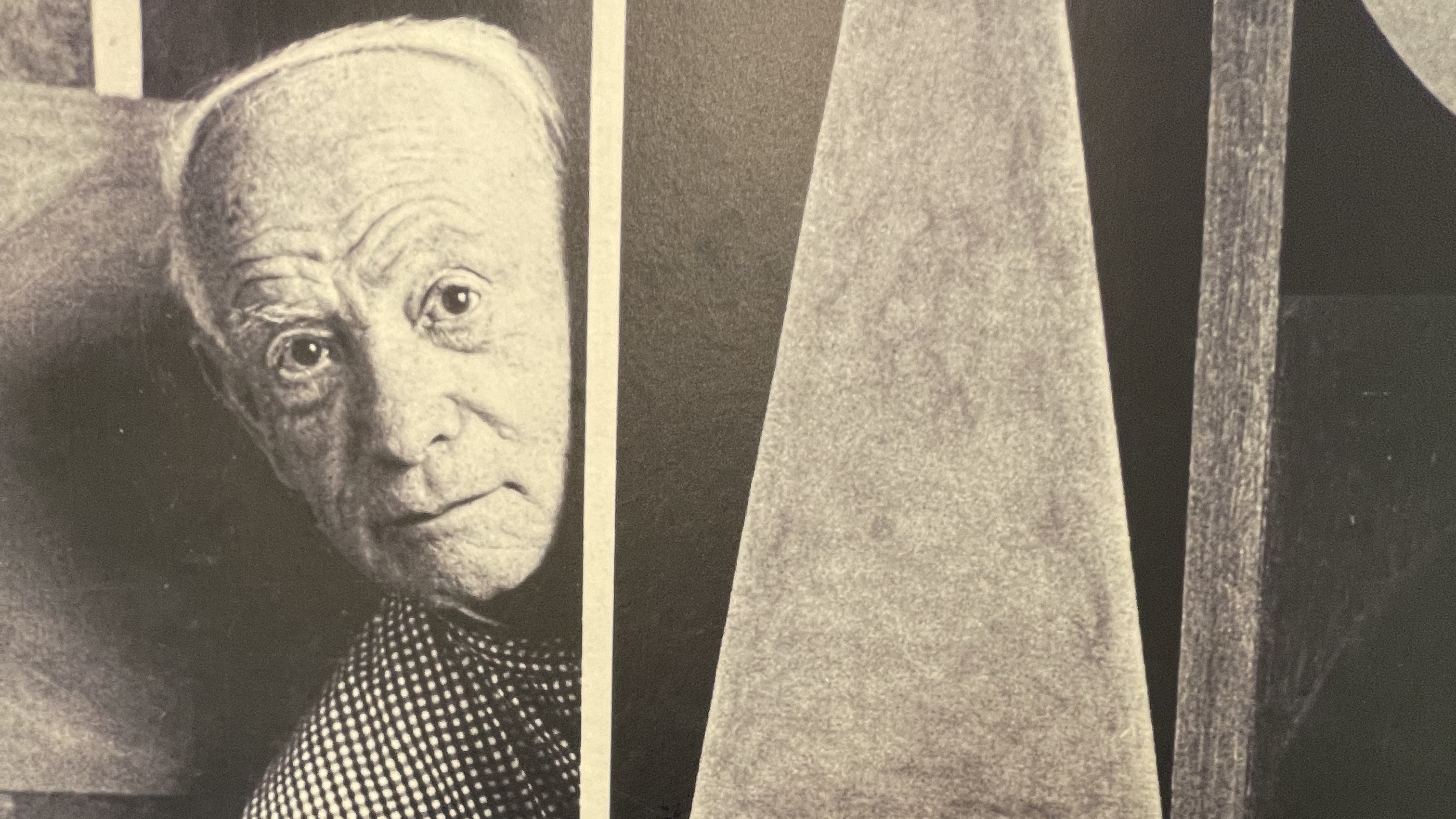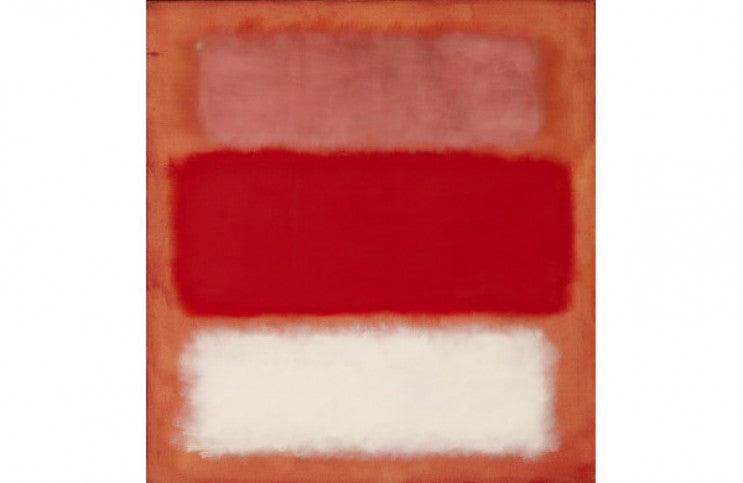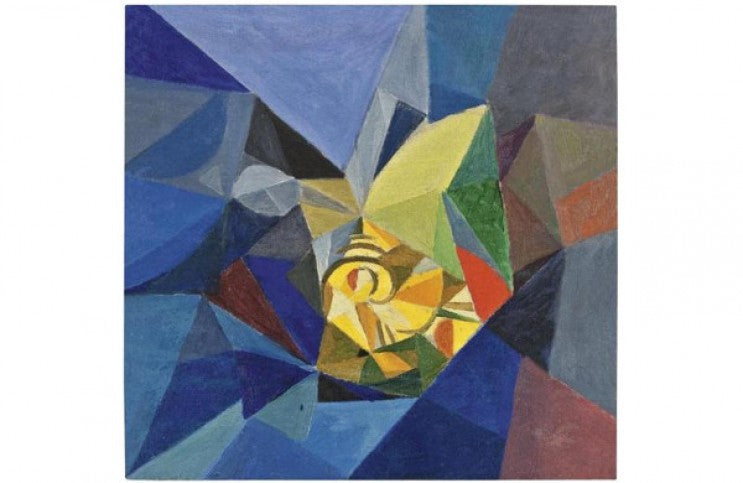
How Alexander Bogomazov Created the Cubo-Futurism
Alexander Bogomazov is an underappreciated hero of Modern Art. He was born in 1880 in a small village near the city of Kiev, Ukraine, when it was still part of the Russian Empire. Despite growing up far from the cultural centers of Russia, Bogomazov would become one of the most influential members of the Russian avant-garde by the time he was in his 30s. His primary work was in the realm of a distinctive style of Russian painting known as Cubo-Futurism, which synthesized the theories of Cubism with those of Italian Futurism. Bogomazov was not the most famous painter in the Cubo-Futurist movement. That distinction went to artists like Lyubov Popova and Kazimir Malevich. Instead, his contribution came via his writings on art theory. In 1914, Bogomazov published “Painting and Elements,” an essay that is now considered one of the most influential treatises in the history of 20th Century art. In it, he broke down the essentials of what painting is and explain how he thought avant-garde artists should approach their work if they wanted to be part of the emergent “New Art.” In one respect his theories were quite simple. He noted, for example, that all art was based on the primary pictorial element: the point; explaining that the point then expands into a line, the line expands into a plane, the plane expands into a mass, and masses move through space and time. What was groundbreaking was his belief that these plastic realities are in themselves worthy of capturing in art.
The Logic of the Future
In his youth, Bogomazov kept journals and wrote poetry and taught himself the principles of how to become a great artist. But also wrote about feeling suffocated by the monotony of his surroundings. His attitude only improved when he realized that he must reject of the logic of the past and adopt a progressive viewpoint of the future. He embraced machines, the industrial age, and the rise of cities, and convinced himself that a New Art could be created that conveyed not just the visual aspects of the Modern Age, but also its emotional complexities. These same ideas were common amongst many other members of his generation, not just in Russia but all over Europe. They were the ideas that led to many uprisings—cultural and military—including the revolution for Ukrainian independence. They were also the ideas that caused many artists to flee Kiev for other capitals, like Paris and Vienna. Bogomazov, however, remained committed to the people and culture of his homeland his whole life. Except for a brief time teaching in the Caucasus, he stayed in Kiev teaching and painting until he died in 1930 at age 50.
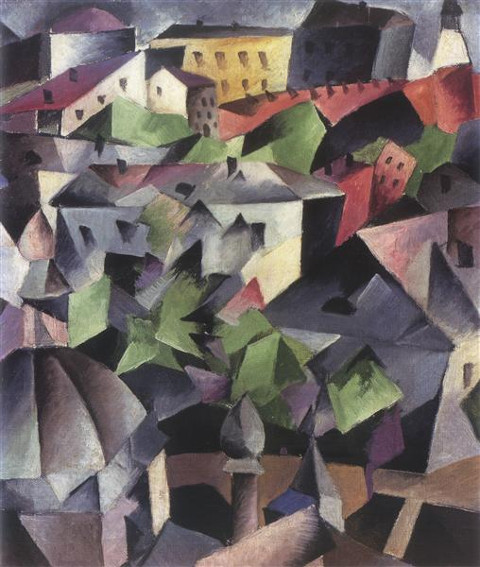
Alexander Bogomazov - Cityscape. Kiev. c. 1913. Oil on canvas. 45.5 x 40 cm. Private Collection
As much as he loved his home, he also desperately longed to transform it. Around 1911, in a letter to his future wife, he expressed his feelings, writing, “Kiev, as regards its plastic volume, is imbued with marvelous, diverse and profound dynamism. The streets are pressing against the sky, forms are intense, lines are energetic; they fall, shatter to pieces, sing and play.” But he was frustrated by how unimaginative artists had become. In “Painting and Elements” he writes, “a number of painters have gone “blind” with a continuous current of realities and assert that we are surrounded by dead stillness rather than real, turbulent and exciting life.” He decided that by borrowing the essential pictorial elements of Cubism he could portray Kiev from his personal point of view. Cubism, after all, is the perfect style to show how the world “shatters to pieces,” and by altering contours and spatial planes he could show the world from a multitude of simultaneous viewpoints and make his pictures “sing and play.” From the Italian Futurists he found the way to show “diverse and profound dynamism,” borrowing their sharply angled lines to capture the grandeur of the movement and energy of the city. Bogomazov perfectly synthesized these techniques in paintings like “Cityscape Kiev” (1914) and “Tram” (1914).
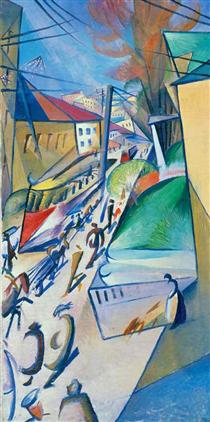
Alexander Bogomazov - Tram, 1914. Oil on canvas. 142 x 74 cm. Private Collection
A More Difficult Art
Bogomazov further emboldened his contemporaries by directly attacking the age-old elitist belief in virtuosity. The prevailing attitude of the older generation was that the most difficult, and therefore most praiseworthy type of paintings were masterful reproductions of reality. Bogomazov argued exactly the opposite. He argued that there is a difference between being a painter and being a creator. Copying the real world is easy, as it only requires the ability to replicate what is already obvious. It is much more difficult to be a creator. Creation requires an artist to confront the world from a completely individualistic perspective. He wrote, “a painter, in order to become a creator, has to gain freedom in his relations to nature; otherwise he will remain forever subordinate to nature, obediently registering everything that comes into his view. Such a painter...will inexorably tend to photography as an idea means of exposing reality ‘as it is.’”
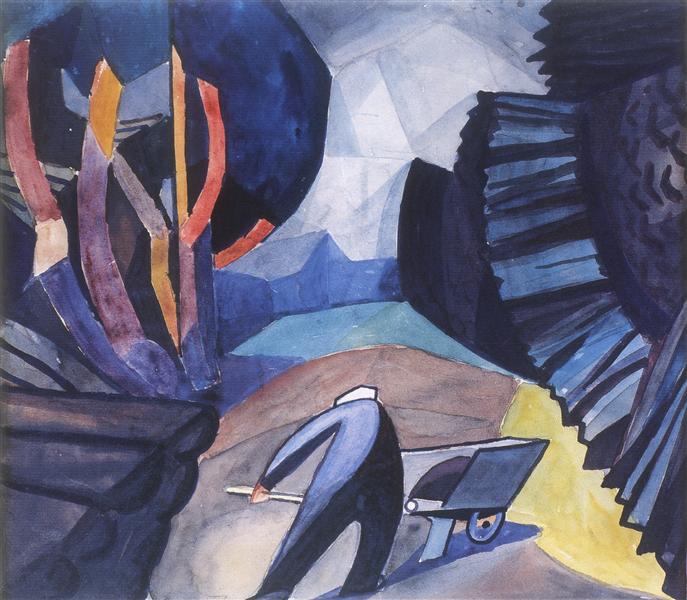
Alexander Bogomazov - Lumberjack, c. 1913. Watercolor on paper. 24.6 x 28.7 cm. Private Collection
Bogomazov praised insight over imitation, writing “I am speaking about the unbounded power of the artist...based on the intimate insight, and thorough knowledge and understanding of pictorial values.” He cherished the unconscious feelings artists had about what they saw, a perspective that inspired artists like Wassily Kandinsky who embraced the spiritual ambitions of abstract art. Additionally, his focus on the independent worth of pictorial values was a turning point towards abstraction, as it taught that representations of single plastic elements like circles or squares can in themselves be considered valid works of art. Most profoundly, he merged all of his beliefs in a painting titled “Memories of the Caucasus” (1916). A swirling arrangement of organic forms, shattered planes, angled lines and expressionistic colors, it lays groundwork for Surrealism and many other movements that were soon to come. Though his paintings may not stand as the epitome of Cubo-Futurism today, his theories indeed freed the Cubo-Futurists from being bound to narrative content, and claimed autonomy for them to prioritize individual artistic visions and celebrate the intrinsic value of paint.
Featured image: Alexander Bogomazov - Abstract Composition, c.1915
All images used for illustrative purposes only
By Phillip Barcio
